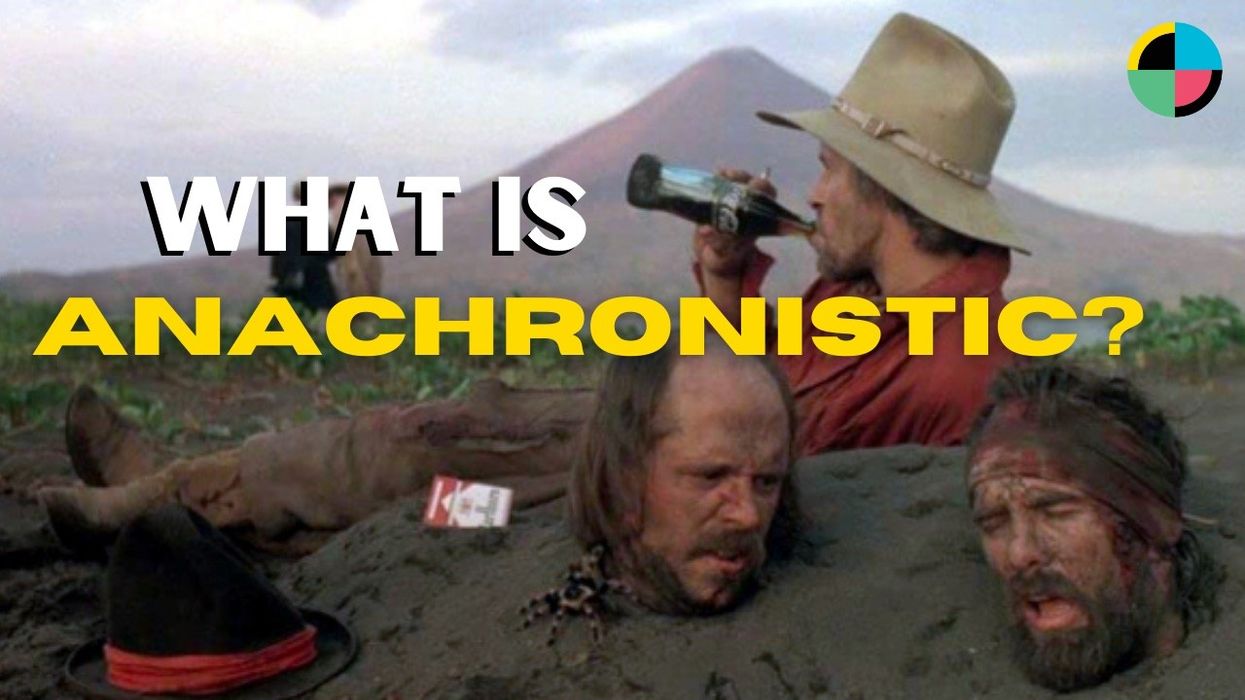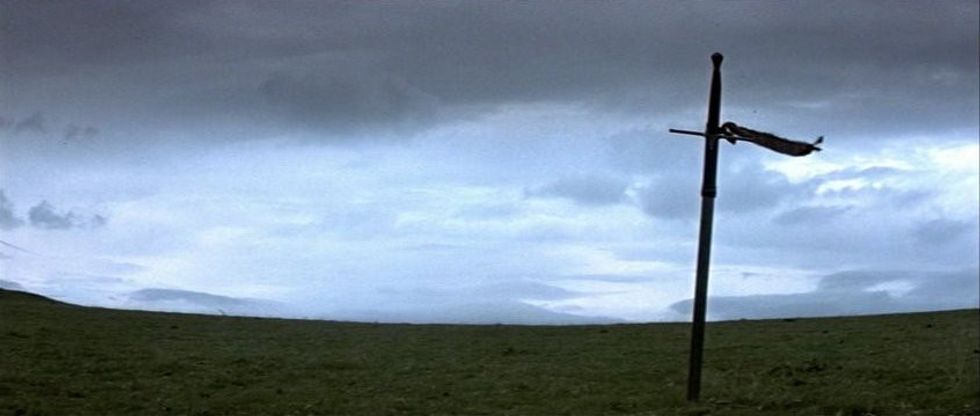What Does Anachronistic Mean in Film and Literature?
If you're not careful, you'll have anachronisms all over film and television.

One of the hardest things about writing something that takes place in another time, whether past or future, is getting the details right. Storytelling comes down to a few things. You have to have great characters and an engaging plot.
Both of those are built on the details you put into them.
But at times, these details can be hard to wrangle. You'll have to do a lot of research to make sure the items in your script exist or don't stand out. And even then, once you get on set, you'll need partners who share the same goal.
These little instances are called anachronisms, and anachronisms can be a real pain. So, what does anachronism mean? How do anachronisms pop up in film, literature, and television?
Today, we're going to look at some examples and unpack the anachronism definition together.
Sound good? Let's go.
What Does Anachronistic Mean in Film and Literature?

As we cover more and more literary devices, you're going to see how important they are to building the foundation of your work. In this case, these details are what make your story authentic and what make it feel real.
Or you can use them to disrupt the tone and set the audiences' expectations onto a new course.
Anachronism Definition

An anachronism is an inconsistency in a detail of a person, event, object, slang, or customs shown in the wrong time period.
Some forms of the word are anachronistic, anachronic, and anachronistically.
Using Anachronism in a Sentence
 The Groundbreaking VFX of 'Game of Thrones'
The Groundbreaking VFX of 'Game of Thrones' How would we use the above definition in a sentence? Well...
"That Starbucks cup in Game of Throneswas an anachronism because there were no coffee chains in Westeros."
Anachronism Meaning in Film and Literature

'Back to the Future'
Universal
There are lots of different ways to see anachronisms in film and literature. Many times, they're intentional. Think about a TV show and movie like The Flinstones. The world they build is full of incongruities.
Fred and Wilma live in a world with dinosaurs and prehistoric monsters, but there are also telephones, cars, and modern music. These elements of the story contribute to worldbuilding through their anachronistic details.
Of course, these types of things happen by error as well. Some are small, like in Back to the Future, when Marty plays Johnny B. Goode on a Gibson ES-345 in 1955, even though the guitar didn't come out until 1958.
Others are bigger, like the fact that YouTube didn't exist in the 2004 setting ofThe Hurt Locker, even if a character begs to be filmed and put on it.
As you can see, anachronisms can be intentional or unintentional.
What is Anachronistic in Film and TV?

As you can see from the examples we covered above, there are many different ways a film can play with the details. You can have anachronic in pretty much anything, including a person, event, object, slang, and custom.
But did you know that there are four specific types of anachronistic details?
The Four Types of Anachronism in Storytelling
Even though there are many different anachronisms you can put into scenes (by mistake or on purpose) that can feel out of place, all these details fall under four major categories.
1. Parachronism
 'I, Robot'
'I, Robot'Sort of a carte blanche term, parachronism means something from out of the time period placed within a story.
Again, these can be on purpose, or they can be mistakes. Try to give everything you write a thorough read to make sure you don't fall prey.
A great example of this kind of detail is from I, Robot. Will Smith's character wears Converse All-Stars because he does not like modern technology. But it is revealed that's because he had a modern fake arm. This detail gives him something to arc into later.
2. Prochronism

'The Great Gatsby'
The best way to describe prochronism is by how we talked about The Flinstones earlier. It is anything in a time period that is impossible for that thing to have existed in, like phones in the stone age or modern rock music played by Knights.
Think of it as a detail that could not exist without rewriting all of history.
An example of prochronism is Baz Luhrmann's The Great Gatsby, which uses a modern hip-hop soundtrack. We see someone turn on a gramophone and hear Kanye West.
3. Cultural Anachronism
 Season 2 of 'Bridgerton'
Season 2 of 'Bridgerton'Netflix
This one is a little trickier to define. Think about going back in time, then doing something that feels modern. Cultural anachronism is anything unrealistic inside its time period. This can be attitudes toward civil rights, cultural understandings, and gender equality.
These are challenging because, let's face it, the past has not always been very progressive. If you want to tell a story about characters in older times, then you're going to have to confront some harsh realities.
Well, in the interest of being diverse or just not wanting to tell those harsher details, many people skip them.
Think about how Bridgerton is set during Victorian times but includes a diverse cast exploring some modern ideals. This does not hold this show back but allows audiences of all backgrounds to engage.
4. False anachronism

'Gladiator'
Fox
This is one I just learned about, and it has a cool root name – The Tiffany Problem.
It's when people assume what they're reading or watching is an anachronism, but it is not. This stems from the fact that the name Tiffany is actually an old name, with its origins in ancient Greece.
But if you heard that name in a movie like Gladiator, you might think it took you out of the story, even if it was completely real. As writers, directors, and producers, we have to know the facts of the story, then bend them for the audience to go on the best ride.
Examples of Anachronism in Film and Literature

We've been showing examples this whole time, but I think there's more to unpack when it comes to literature, film, and television. There's a wristwatch in the movie Glory, Mel Gibson's tunic is not period in Braveheart, and no one had invented a telescope in the time period of Robin Hood: Prince of Thieves.
Even the greatest writers have these kinds of devices in their work. William Shakespeare's Hamlet even contains a big one.
The character Hamlet is said to be attending the University of Halle-Wittenberg. Apparently, that university was founded in 1502 AD. The time period of the play was the 13th century (or 7th, depending on the production), which means that the school had not been founded yet.
Sometimes, these details are baked into legends, and we go along with them even if they are not period-specific.
The idea of King Arthur and his Knights sitting at a round table, covered in armor, talking out their problems, is historically incredibly inaccurate. Full plate armor was not invented and commonly used until at least the 13th century AD, and the real-life King Arthur died in 550 AD, almost a thousand years prior.
Summing What Does Anachronistic Mean in Film and Literature?
As creators, we have to make choices about what we want to introduce in each scene. It's a hard task at times, but as worldbuilders, it's our job to sculpt out an area for the characters that allows our narrative choices to shine through.
Do you have more of these details you've seen in film and literature that you want to share?
Let us know in the comments.
- 10 Filmmaking Tips from Edgar Wright ›
- What Is Anachronistic and What Does Anachronistic Mean in Film and Literature? ›












